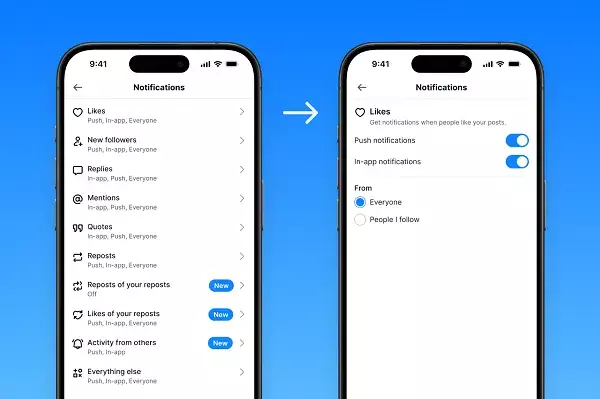The social media landscape is constantly evolving, with new platforms emerging and vying for user attention. Bluesky, an optimistic attempt at creating a decentralized social network, finds itself struggling to carve out a distinct identity amid mounting competition. While the platform has begun adding Twitter-like functionalities, such as customizable notifications, these features feel more like band-aids rather than strategic differentiators. With Meta’s Threads gaining rapid adoption by leveraging Instagram’s existing ecosystem, Bluesky’s prospects look increasingly bleak unless it offers something more transformative. Simply mimicking Twitter’s features is insufficient when an app’s success depends heavily on user engagement and uniqueness.
The core challenge for Bluesky is that it has yet to prove its worth beyond ideological appeal, which itself faces stiff hurdles. Many users claim they want decentralized control, but their actual behaviors contradict this desire for simplicity and convenience. As the platform struggles to attract active users, it becomes painfully evident that feature parity alone cannot bridge the gap. It is not enough to replicate Twitter’s notifications or allow nuanced control—users seek experiences that feel intuitive, effortless, and embedded into their routines.
Customization and Control: A Double-Edged Sword
Recent updates to Bluesky aim to enhance personal management with features like configurable activity notifications, giving users more granular control over what updates they see. While these additions might seem progressive on paper, they highlight a fundamental misalignment with user preferences. Most people do not want to spend extra time managing their feed or toggling options manually. They prefer platforms that intelligently serve content with minimal effort from their end.
Ironically, the very notion of offering increased control feeds into a broader misconception. Decentralization and customization are often touted as revolutionary, yet in practice, they introduce friction. Users often express frustration with algorithms driving their experience—yet they rarely invest the effort needed to manually curate every aspect of their feed. The reality is that, in the age of hyper-personalization driven by machine learning, convenience trumps control. Platforms like TikTok and Facebook have mastered this balance, delivering tailored content seamlessly, because they know that users value effortless engagement more than granular autonomy.
The paradox is that the more control a platform offers, the more it demands user effort in return. This is a powerful reason why Mastodon has struggled to gain mass adoption: it requires users to select servers, configure privacy settings, and navigate decentralized networks that are not as user-friendly. Conversely, Threads’ seamless integration with Instagram means users can create accounts in seconds, with minimal friction. This ease of onboarding has proven to be a critical driver of growth.
The Convenience Factor: The Hidden Power Behind User Loyalty
At the heart of social media success lies a simple but compelling truth: people prefer convenience over ideological purity. While the idea of decentralization and heightened user control is appealing in theory, the practicalities often turn users away. Despite concerns over privacy and data sharing, most still prefer platforms that allow quick, effortless access to the content they care about.
Take Facebook as an example. Even after years of scandal and revelations about data misuse, the platform remains dominant because its user experience is familiar and effortless. The majority of users have little motivation to revisit privacy settings or troubleshoot privacy concerns—they simply continue scrolling. Similarly, Mastodon’s niche appeal stems from its decentralization but suffers from fragmentation and complexity that limit mainstream adoption.
The challenge for any emerging social media platform is to balance meaningful control with user-friendly design. Without that balance, even the most innovative features can become irrelevant if users find the platform too cumbersome or unintuitive. Bluesky’s current trajectory indicates it is still struggling to find this equilibrium.
Moving Beyond Feature Parity Toward Strategic Differentiation
To truly challenge the dominance of established platforms, Bluesky must pivot from mimicking Twitter and Facebook to crafting a unique value proposition. Simply adding features like customizable notifications and privacy controls is not enough. It must cultivate a community, foster engagement, and develop mechanisms that make users feel both empowered and effortless in their social experience.
Moreover, true differentiation will likely come from innovative engagement models rather than mere feature replication. This could involve integrating multimedia, fostering community-driven moderation, or leveraging blockchain technologies to reinforce decentralization—if presented in a way that is accessible rather than intimidating.
Bluesky’s challenge is to transcend the trap of feature wars and focus on creating an experience that aligns with modern user expectations: simplicity, relevance, and community. Without that, it risks remaining a niche experiment rather than a viable alternative to mainstream social networks.
In this rapidly shifting ecosystem, platforms that prioritize human convenience and intuitive design—rather than sheer technological novelty—will ultimately dominate. Whether Bluesky can reinvent itself to meet this reality remains an open question, but history suggests that without addressing the core desire for effortless interaction, even the most promising projects will falter.

